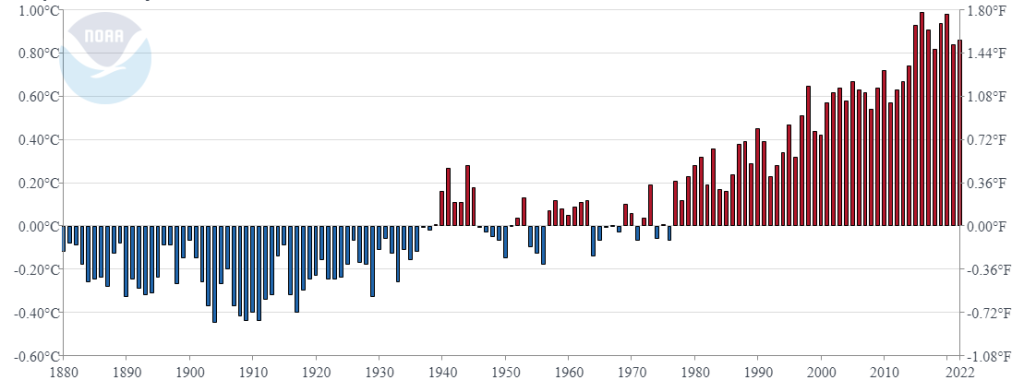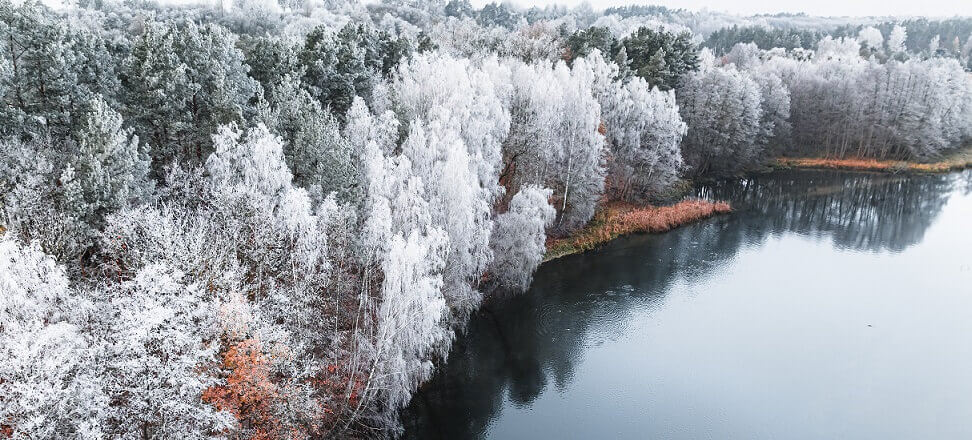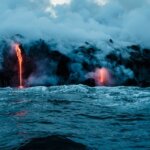Throughout Earth’s history, the climate has undergone frequent transformations, with cooler periods repeatedly alternating with warmer ones. The mechanisms of climate change hundreds, thousands or millions of years ago were natural in nature. There is no doubt that global temperature has increased in recent decades (Figure 1.), and the rising trend has been further influenced by irregular oscillations corresponding to the rhythm of variability of the Ocean-Atmosphere system. The highest annual global temperature in the history of observation was recorded in 2016, but it is highly likely that the warmest year globally will turn out to be 2023.

Impact of climate change
To interpret the mechanism of the current climate change, it is necessary to know that due to the burning of huge amounts of coal, oil and gas, global emissions and concentrations of greenhouse gases in the atmosphere are increasing, so the greenhouse effect is intensifying.
It cannot be categorically stated that it was climate change that caused a particular drought or flood. Such phenomena also occurred during periods when the climate was relatively stable. However, it can be considered that the probability of such events increases with climate change. A warmer atmosphere holds more water vapor, so an increase in temperature increases the potential for intense precipitation. Long dry periods can be punctuated by heavy rain. The threat of flash and urban flooding is growing. There are three categories of water problems: excess, shortage and inadequate quality. All three may intensify with climate change.
Excess water
There is no doubt that flood damage is increasing worldwide. Analysis of changes in the frequency, intensity and magnitude of observed precipitation has shown a significant increase in many (though not all) regions of the world. Factors that increase flood risk include, in addition to climate change, sealing of the land surface, decreased retention and increased loss potential. A richer society has more and more to lose. Floods caused by various mechanisms – precipitation, snowmelt, blockage and storms – have haunted the Polish lands since time immemorial. We should conserve water as long as possible where it falls as rain or snow, instead of paying homage to the principle of from cloud to pipe (and beyond – pipe to river, and river to sea).
Flood risk reduction is needed. We are trying to keep the force of water away from people through technical safeguards (bunds, dams and reservoirs), and to keep people and critical infrastructure away from potentially threatening watercourses through proper land use. Strategies also include mitigating the potential effects of devastating excess water, implementing forecasting, warning and evacuation systems, and preparing for flood recovery. We are making efforts to reduce the impact of each of the risk components: the probability of high water levels (the occurrence of heavy rainfall in a particular location, however, we cannot address), exposure, and vulnerability and susceptibility.
Poland, as part of the implementation of the Floods Directive, is required to prepare flood risk management plans. However, their implementation remains low. Plans for 2016-2021 were implemented to a very small extent (6.3 percent of the planned actions for the Oder River basin, and even less, only 2.6 percent, for the Vistula River basin).
Water shortage
Droughts in recent decades are much more frequent in Poland than they used to be. They recently hit our country in 2015, 2018, 2019 and during the 2020 pandemic spring. There have already been two consecutive dry years, but there could be a sequence of three or even more, which would lead to a dramatic increase in losses. The likelihood of such a multi-year drought increases as the climate warms.
Negative water balance during the growing season, especially in spring and summer, when vegetation, including crops, need it most, is becoming an increasingly serious problem. Less snow is falling in much of Poland, and we are seeing more and more rain in the winter. Water runs down the surface instead of soaking into the soil during snowmelt. The consequence is an increasingly severe and frequent spring drought. Temperature (and therefore evaporation) is rising, while precipitation is not. As a result, during the warm six months, more water evaporates than falls. In summer, there are longer periods without rainfall or with rainfall well below normal, which can be punctuated by intense downpours. So we have to deal with the occurrence of both drought (meteorological, hydrological and agricultural) and devastating excess water.
Low precipitation and low retention capacity are shaping the unfavorable pattern of water relations in Poland. Water scarcity phenomena are felt particularly strongly in the Polish Lowlands, and regions frequently haunted by droughts are northeastern and central Wielkopolska and Kujawy. Due to drainage, much of the wetlands that effectively regulated surface runoff and stored water for times of scarcity have disappeared. As a result of desiccation, ecosystems with high retention capacities, such as meadows, pastures, bogs and marshes, have been turned into farmland, where mineralization of organic matter and a reduction in water holding capacity is proceeding. The ability of the environment to retain water has decreased, while the rate of surface runoff has increased.
Warming, accompanied by increasing moisture deficiency, higher wind speeds and sunshine, has increased field evaporation. Since evaporation from the free water surface exceeds precipitation totals, water levels in lakes, groundwater levels and soil retention decrease, and flow in small watercourses periodically disappears. Drought in forests leads to a decrease in the moisture content of the soil and forest litter, a lowering of the surface and groundwater table, a reduction in the growth and vitality of stands, as well as their resistance to pathogens. The risk of fires is growing. In Poland, in the context of climate change, it can be expected that it will be necessary to significantly expand the agricultural areas that will require irrigation.
Water quality problems
The premise of the Water Framework Directive, an essential element of European Union policy, was to bring all waters within the EU to good status. Admittedly, this has not been fully successful, but significant progress has been made everywhere. The problem of point source pollution has been greatly mitigated in our country, thanks to the establishment of numerous wastewater treatment plants. However, it is more difficult to reduce the influx of area pollution from rural areas.
In the summer of 2022. there was a major environmental disaster on the Oder River, which caused massive fish die-offs. The mechanisms for its occurrence were not obvious, and in particular it was not possible to point to a single culprit. The perpetration turned out to be complex and responsibility diluted. The immediate cause of the disaster was a fast-acting ichthyotoxin produced by the “golden algae”(Prymnesium parvum), and its release was facilitated by high temperatures (increasingly common in a warming climate) and sunshine, increased salinity and low water flows in the river. The high level of salinity in the Oder River water is a result of mine drainage.
The key is to cut off the sources of salinity in the Oder River. Various ways to achieve this goal are possible. The best environmental solution, although expensive, would be to introduce a regulation mandating desalination of mine discharges (action at the source of the problem), which should not be limited to brine concentration. A much cheaper, but temporary, solution would be to build brine tanks and use retention and dosing systems to intelligently control discharges. During lows, the discharge of mine salt into rivers should be completely halted.
The absolute goal should be for Poland to meet the requirements of the EU Water Framework Directive, without derogations. A reduction in the discharge of post-mining, industrial and municipal wastewater is needed. In many cases, the solution is to upgrade older treatment plants. There is also a need to reduce area pollution inputs to rivers. Actions that should be taken are the verification of the water licenses and permits, and the analysis of the cumulative impact of salinity and pollution on the state of the river, as well as the introduction of effective financial mechanisms to enforce water protection.
Tasks for water management
The essential tasks of water management are: meeting water needs (supplying water to the population and the economy), water security (protection against floods and drought) and protection of water resources. Governance in Poland in this area can be considered in various dimensions, through interacting systems – legislation and the institutional set-up, the financing system, the procedure for issuing decisions, the rules for resolving conflicts, and international conditions.
Poland is not dealing with water problems very well. Repeated droughts lead to significant agricultural losses. Floods, especially flash urban floods, which occur more frequently in increasingly warmer climates, cause heavy property damage, and the Oder environmental disaster in the summer of 2022. has caused massive fish die-offs. Meanwhile, the challenges of the future will be even more demanding, due in large part to climate change. What can be done? It is advisable to take action of two kinds – mitigation of climate change (this important area, however, is beyond the scope of this article) and adaptation to its effects.
An integrated approach to managing Poland’s scarce water resources is needed. Integration can be understood both in the resource sense (combined treatment in the context of quantity and quality of all resources: atmospheric precipitation, surface water and subsurface water) and in the use sense (integration with the socio-economic environment and spatial planning, ensuring economic productivity, social justice and environmental protection in accordance with the principle of sustainable development, in the sense of Article 5 of the Polish Constitution). What is needed in Poland is an increase in water retention at all scales, meaning grabbing water when there is plenty and using the stored resources when there is a shortage.
An important step is to prevent problems from arising. The basic principle applied to water management should therefore be control at the source. However, this requires the implementation of such regulations that will make the “polluter pays” principle a commonly enforced practice. The whole of water management – an area of great importance – has been administratively placed in recent years in the Ministry of Inland Waterways, which is of far less importance. There is no great inland waterway in Poland and, in my opinion, there cannot be, unless political considerations decide and decision-makers decide that there must be, against common sense and economics. We have little water – rainfall and river flows are low.
The probability of maintaining navigable depths throughout the year is not high. There are quite often lows or highs that make navigation impossible, as well as frosts strong enough to cause the water to freeze. The rivers are largely unregulated, and the viability of costly investments is questionable. It certainly makes sense for tourist and recreational shipping and freight where they have existed for a long time, which is in a relatively small area.
During the existence of the Ministry of Maritime Affairs and Inland Waterway Transport, the share of inland shipping in the volume of domestic freight has been steadily declining, and in 2021 it fell to 0.15 percent, the lowest ever. There are serious problems on the supply and demand side. Undoubtedly, a reduction in truck freight is needed. However, the slogan “trucks to ships” (ships would have to be bought first), and ships to rivers (they would have to be channelized first), seems to me a worse solution for the economy and the environment than the old and still promising slogan – “trucks to the tracks.”
The current location of water management in the competence of the Ministry of Infrastructure is probably the worst possible. It evokes the fatal association of a regulated river, framed by a concrete corset, instead of wide floodplain terraces. A utilitarian view of the watercourse as a navigable channel rather than an ecosystem prevails. Since rivers are an element of infrastructure, they are viewed in the category of roads and “road work” is carried out on them.
Combining in a centralized organization Wody Polskie the powers of a water user and a public authority that issues administrative decisions is a questionable solution. The current institutional set-up for water management is overly centralized and requires changes in the management system, according to the so-called “water management system. The principle of subsidiarity, while maintaining the catchment nature of water authority. There is a need to transfer some competencies to local governments, as well as to lower levels of management within the PGW WP structure itself.
The material is based on the article ” Impact of climate change on the future of water resources in Poland ” published in issue 1/24 of the scientific journal “Water Management”. We encourage you to read the full article.

 Polski
Polski






